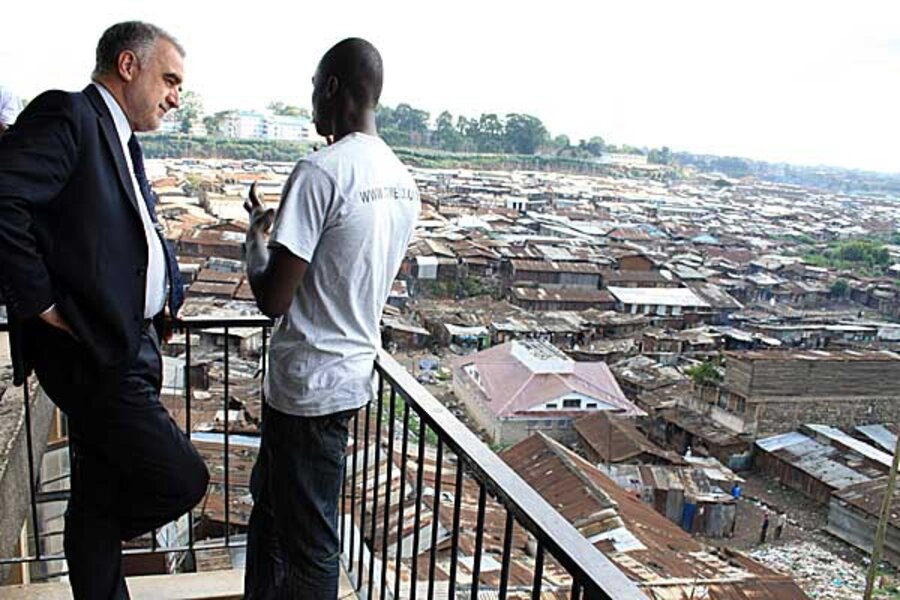In Kenya, International Criminal Court to try six top Kenyans
Loading...
| Johannesburg, South Africa
Luis Moreno-Ocampo, chief prosecutor for the International Criminal Court (ICC), ended his visit to Kenya today after having met with victims of the post-election violence of early 2008 that killed some 1,300 people, and displaced some 300,000 others.
Mr. Ocampo said that investigators had strong enough evidence to try six top Kenyans at the ICC at The Hague, with arrests warrants to be issued perhaps by the end of this year. But he did not name the six suspects.
Ocampo’s visit comes as the ICC investigation goes into high gear, interviewing dozens of witnesses and victims of the violence, in which organized mobs murdered neighbours based on ethnicity or chased them from their homes. In accordance with a 2008 peace agreement hammered out by former UN Secretary General Kofi Annan, the ICC prosecutor began his investigation after Kenya’s parliament rejected a bill that would have created local tribunals to try the perpetrators of the election violence in Kenya itself.
“It’s important that Mr. Ocampo takes this step,” says Omar Hassan Omar, chairman of the Kenyan National Commission for Human Rights in Nairobi. “We hope that he will be able to continue this investigation so that we can end impunity and the threat of violence.”
The ICC was established in 2002 as a permanent world tribunal to prosecute individuals for genocide, war crimes, and crimes against humanit.
The conflict started just hours after results were announced from the Dec. 27, 2007 Kenyan elections, with President Mwai Kibaki announced as the winner. Opposition members of the Orange Democratic Movement (ODM) protested these results, pointing to evidence of fraud and vast differences between the votes counted at polling stations and those reported by Kenya’s Independent Election Commission in Nairobi. In areas where ODM was strongest, particularly in the Rift Valley, violent protests erupted, and those seen favoring the party of Mr. Kibaki – either because of their shared Kikuyu ethnic ancestry or because of declared party affiliation – were attacked and threatened.
A February agreement between the two sides finally brought peace, and a power-sharing government between ODM and Kibaki’s party, the Party for National Unity. Justice would be delayed under Mr. Annan’s agreement, but not denied. If Kenya refused to take up the investigation of post-election violence, then the ICC would take it up instead.
Speaking to Reuters news agency, Mr. Ocampo pledged to bring the “most responsible” – even senior Kenyan politicians if necessary – to justice.
"The plan is to present the two cases with six people before the end of the year and then we hope to have the hearings in 2011," Mr. Ocampo told Reuters."We will select the worst incidents ... There are more persons responsible, yes, I've got evidence against 20 more, yes, but I will select two or three."
Some witnesses who testified at an non-judicial commission into the post-election violence have complained of harassment, and the United States Embassy in Nairobi has offered protection to any witness willing to testify before the ICC.
RELATED STORIES:





